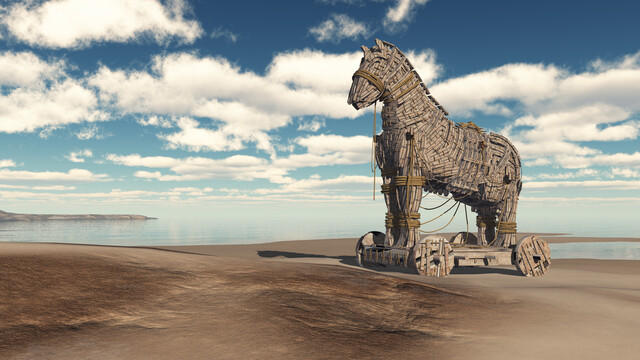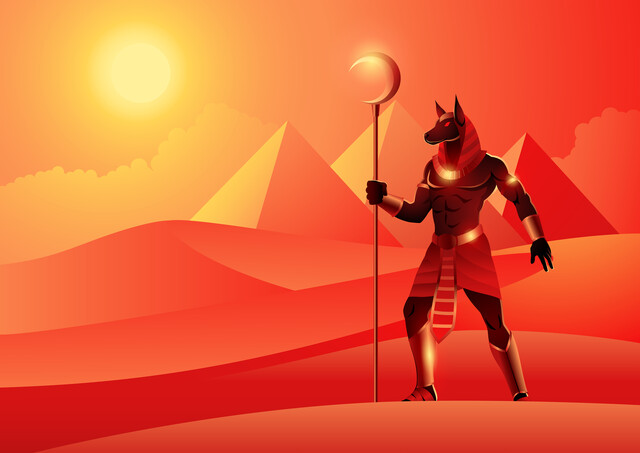Online Class: Pre-Columbian Mythology

no certificate
with CEU Certificate*
-
8Lessons
-
20Exams &
Assignments -
196Students
have taken this course -
4Hours
average time -
0.4CEUs
Course Description
Mysteries of the Pre-Columbian Epoch: Mythologies of a Lost Era
Dive deep into the annals of history and uncover tales of civilizations that defied imagination and painted a world bursting with intrigue, grandeur, and unparalleled innovation. The Pre-Columbian era wasn't just an age; it was a canvas of human spirit and wonderment, revealing tales that have remained enigmatic to this day.
Step into a world that predated Columbus's voyages, a time where powerful empires such as the majestic Incas, the ingenious Mayans, and the formidable Aztecs ruled vast territories, revered unique deities, and crafted societies that were the epitome of advancement and sophistication. These civilizations, set apart from the rest of the world, grew and flourished in isolation, creating tapestries of legends, rituals, and cultures that continue to mystify scholars.
Course Highlights:
-
Discovering the Unknown: Navigate the intricate labyrinths of the Pre-Columbian societies, from their breathtaking architecture to their unparalleled myths.
-
Beyond Rituals: Explore the spiritual beliefs that not only defined but propelled these civilizations into creating monumental legacies.
-
Ancient Innovations: Dive into the origins of modern sports, trace the lineage of architectural marvels, and decode the genius behind some of history's most enigmatic innovations.
-
Untangling Myths: With a nuanced approach, we'll demystify the captivating, yet often misunderstood aspects of these cultures, offering a balanced perspective on their rituals, governance, and societal structures.
-
A Global Perspective: Understand how these ancient societies, separated from the rest of humanity, have influenced and shaped the cultural and historical fabric of the global community.
-
For Every Learner: Whether you're an avid traveler aiming to enrich your Latin American journey, an archaeology enthusiast, a curious mind, or a dedicated scholar, this course promises revelations and insights that cater to every inquisitive spirit.
-
Interactive Experience: Immerse yourself in rich multimedia content, interactive timelines, and engaging discussions that not only inform but inspire.
The Pre-Columbian epoch wasn't just an age; it was an era that witnessed the blossoming of human potential in isolation, producing tales of valor, faith, and innovation. As we unravel these chronicles, you'll be taken on a transcendent journey that bridges the past with the present, uncovering stories that have shaped civilizations and continue to influence modern society.
Join us, as we journey through time, traversing the landscapes of these mystical empires, and immerse yourself in a narrative that's as captivating as it is enlightening. Embrace the opportunity to explore an epoch that forever changed the course of human history.
- Completely Online
- Self-Paced
- 6 Months to Complete
- 24/7 Availability
- Start Anytime
- PC & Mac Compatible
- Android & iOS Friendly
- Accredited CEUs

Course Lessons
Lesson 1. Legacy of Resilience: Preserving Indigenous Heritage in the Americas
Before European encounters, the Americas were home to great civilizations with their own systems of governance and spiritual beliefs. While colonization disrupted many aspects of these societies, the enduring cultural heritage of their descendants testifies to remarkable resilience and revitalization.Lesson 2. Andean Synthesis: The Pre-Incan to Incan Continuum
Symbolizing the pinnacle of Andean civilization, the Incas drew from the architecturally impressive Tiahuanaco and the organized Chimú to forge an empire underscored by innovative road systems and religious amalgamation. The Incas maintained power by assimilating conquered cultures' gods, reinforcing an enduring cultural and religious influence marked by the survival of traditions like the Inti Raymi.Lesson 3. Sacred Offerings: Aztec Gods and Their Worship
The Aztec Empire, with its grand city Tenochtitlan in modern Mexico, showcased cultural and architectural brilliance before its fall to the Spanish in the 16th century. Known for its impressive canals and temples, the Aztecs created a sophisticated society based on strategic alliances, religious rituals, and a strong economy supported by agriculture.Lesson 4. Mayan Marvels
The Mayan civilization, spanning over two millennia, is renowned for its architectural and scientific marvels, including the precise calendar and sophisticated writing system. Despite their eventual decline, their cultural legacy persists through millions of descendants who continue Mayan traditions.Lesson 5. A Vengeful Hero's Journey: Amazonian Myth in Focus
Diverse female deities in Arawak mythology exemplified strong matriarchal influences, contrasting with male-dominated pantheons of mainland civilizations. While European colonization altered many indigenous beliefs, some traditions survived, especially in isolated regions, highlighting their resilience.Lesson 6. Echoes of the Ancestors: How Pre-Columbian Civilizations Shape Modern Beliefs
Modern descendants of the mighty Mayans and Incas actively preserve and adapt their ancestral rituals and beliefs to contemporary contexts, thereby keeping their rich heritage alive. Sacred spaces like Peru's Machu Picchu and Mexico's Calakmul serve as tangible connections to the past, inspiring awe and reverence for their architectural marvels and spiritual meanings.Lesson 7. The Collision of Worlds: Indigenous Resilience in the Face of European Colonization
Many sacred sites were transformed or repurposed as a symbolic act of European dominance, yet some, like Machu Picchu, survived undisturbed and were later rediscovered, revealing the interconnectedness of indigenous cultures with the natural world. Inca architecture, aligned with celestial events, continues to resonate, showcasing their advanced understanding of astronomy.Lesson 8. The Enduring Impact of Mayan Mysticism
Despite advancements, the untouched riches of Latin America's ancient ruins and artifacts promise ongoing discoveries that could reshape historical understanding. Archaeologists maintain that many mysteries of civilizations like the Maya are yet to be unearthed, sparking global intrigue.
Learning Outcomes
- Define the key achievements of the Aztec, Mayan, and Incan civilizations in terms of architecture, culture, and governance.
- Describe the impact of European contact on indigenous populations in the Americas, focusing on demographic and cultural changes.
- Describe how the religious practices of the Tiahuanaco civilization influenced Incan religious traditions, using specific examples of iconography and symbolism.
- Identify the architectural features of Chan Chan and explain their significance in demonstrating the Chimú Empire's social organization and religious practices.
- Describe the significance of the Templo Mayor in the religious and cultural life of Tenochtitlan, including its role in Aztec rituals and mythology.
- Identify three key architectural features of Tenochtitlan that demonstrate the engineering prowess of the Aztec civilization.
- Identify significant Mayan achievements in architecture and astronomy, such as the construction of Chichen Itza and their detailed calendar system, using relevant examples.
- Recognize the three distinct stages of Mayan history (Pre-Classic, Classic, Post-Classic) by associating key developments and characteristics with each period.
- Demonstrate an understanding of the diverse religious beliefs and rituals of pre-Columbian South and Central American cultures, including the Aztecs, Mayans, Incas, Arawak, and Carib peoples.
- Identify and describe the role of oral tradition in preserving and transmitting religious beliefs and narratives across different pre-Columbian societies, using specific examples from Aztec and Amazonian cultures.
- Analyze how pre-Columbian civilizations used monumental architecture to reflect their cosmological beliefs and maintain cultural continuity.
- Identify and describe the enduring influence of Mayan and Incan architecture on modern spiritual practices.
- Recognize the process of religious syncretism and its impact on cultural identity by analyzing examples of indigenous and Christian belief integrations in post-colonial societies.
- Demonstrate mastery of lesson content at levels of 70% or higher.
Additional Course Information

- Document Your Lifelong Learning Achievements
- Earn an Official Certificate Documenting Course Hours and CEUs
- Verify Your Certificate with a Unique Serial Number Online
- View and Share Your Certificate Online or Download/Print as PDF
- Display Your Certificate on Your Resume and Promote Your Achievements Using Social Media

Choose Your Subscription Plan
No Certificate / No CEUs
This course only
| Includes certificate | X |
| Includes CEUs | X |
| Self-paced |

|
| Instructor support |

|
| Time to complete | 6 months |
| No. of courses | 1 course |
Certificate & CEUs
This course only
| Includes certificate |

|
| Includes CEUs |

|
| Self-paced |

|
| Instructor support |

|
| Time to complete | 6 months |
| No. of courses | 1 course |
Certificates & CEUs
Includes all 600+ courses
| Includes certificate |

|
| Includes CEUs |

|
| Self-paced |

|
| Instructor support |

|
| Time to complete | 12 Months |
| No. of courses | 600+ |
Certificates & CEUs
Includes all 600+ courses
| Includes certificate |

|
| Includes CEUs |

|
| Self-paced |

|
| Instructor support |

|
| Time to complete | 24 Months |
| No. of courses | 600+ |
Student Testimonials
- "The course was fun and Mr. McKenna is an awesome teacher and always provides positive feedback and he made me think deeper into the subject matter and I learned things I never knew before." -- Diana C.






